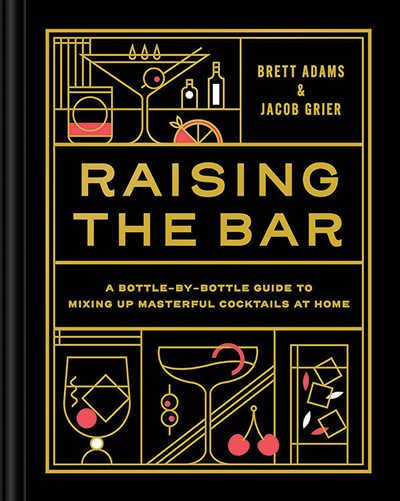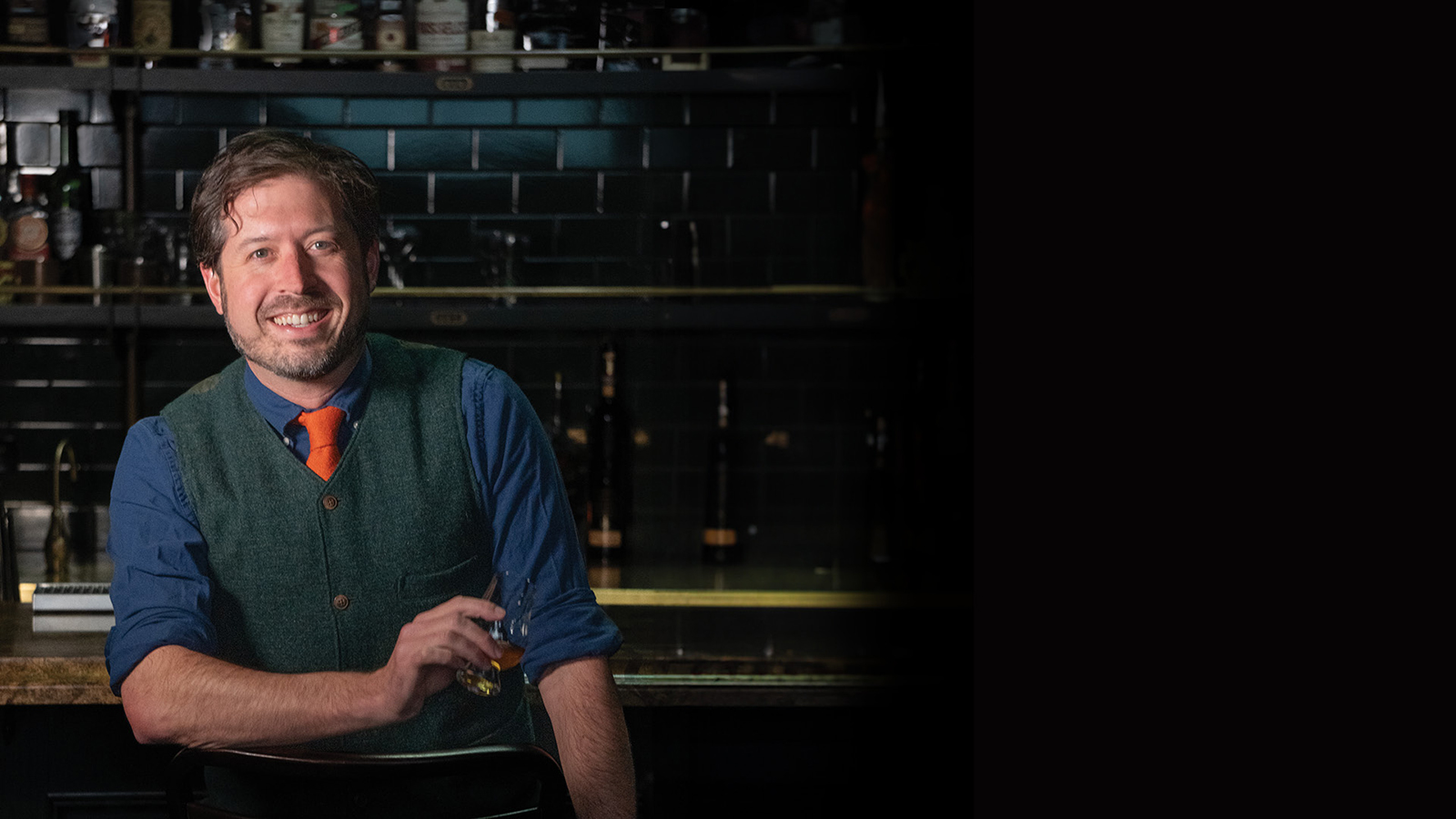When Jacob Grier crafted an interdisciplinary major at Vanderbilt in philosophy and economics with a dash of political science, under the guidance of Professor John Lachs, he likely didn’t know how well prepared he would be for a career creating cocktails. “Especially to anyone who might have known me in college, I barely touched alcohol at the time,” he says. A resident of McGill Hall, Grier fit in well with the denizens of the historically independent and decidedly quirky community known for being the hub of “alternative culture” on campus.

“I really liked being in McGill among the more offbeat people at Vanderbilt,” Grier says, noting that he often did magic tricks at the McGill talent shows and coffeehouses, something that he still does these days in Portland, Oregon. He admits that living in McGill may have influenced his decision to move to the northwest. “Portland is very like McGill in some ways as a city,” he says, but it was the brewing that drew him in. “Portland has a great reputation for cocktails, beer and coffee, and I came here open to working in any of those fields. It’s just that cocktails is the one that took off.”
With Portland as his base, the second-generation Vanderbilt alum (mom, Lynn Grier, ’77, and dad, Dr. Kenneth Grier, BA’75, met during their undergraduate days at VU) consults in the spirits industry and writes books on topics from tobacco policy (The New Prohibition: The Dangerous Politics of Tobacco Control, 2023) to beer cocktails (Cocktails on Tap: The Art of Mixing Spirits and Beer, 2015). His  latest book on cocktails is Raising the Bar: A Bottle-by-Bottle Guide to Mixing Up Masterful Cocktails at Home (Chronicle Books, 2022). It is cowritten with Brett Adams, bartender and curator of the selection at the Multnomah Whiskey Library, a membership-based bar with a collection of nearly 2,500 spirits, which Grier notes is “absurdly large.” He jokingly refers to himself as the substitute teacher there. “The core staff call me up if they need someone to step in,” he says. The two will soon write a second book taking a deeper dive into spirits and cocktails, but Raising the Bar is helpful to any person who may wonder where to start with a home bar. Grier offers these tips to help any novice.
latest book on cocktails is Raising the Bar: A Bottle-by-Bottle Guide to Mixing Up Masterful Cocktails at Home (Chronicle Books, 2022). It is cowritten with Brett Adams, bartender and curator of the selection at the Multnomah Whiskey Library, a membership-based bar with a collection of nearly 2,500 spirits, which Grier notes is “absurdly large.” He jokingly refers to himself as the substitute teacher there. “The core staff call me up if they need someone to step in,” he says. The two will soon write a second book taking a deeper dive into spirits and cocktails, but Raising the Bar is helpful to any person who may wonder where to start with a home bar. Grier offers these tips to help any novice.
Start with the classics
Start with classic, versatile spirits that mix into lots of drinks rather than bottles that you need for only one particular cocktail. “Things that make sense in a bar don’t always make sense at home,” Grier says. “Unless you’re drinking that one cocktail all the time, those bottles will end up gathering dust.” He suggests basics like bourbon, gin, tequila and rum. “In our book, we identify bottles that are versatile, and we tell you all the drinks you can make with that bottle. So every time you add a bottle to your bar, you’re adding 10 or so new cocktails.”
Fresh vermouth is a must
You also want to mix some things with your basics, like vermouth or an orange liqueur like Cointreau. Grier suggests stocking up on good vermouth and fortified wines and keeping them refrigerated once they’re open. “One of the most common and dreadful finds in a home bar is an old bottle of oxidized, room-temperature vermouth that’s going to make an absolutely terrible martini or Manhattan. Good, fresh vermouth will make your cocktails sing.” Syrups that you make or buy should also be refrigerated and used within a reasonable amount of time.
“One of the most common and dreadful finds in a home bar is an old bottle of oxidized, room-temperature vermouth that’s going to make an absolutely terrible martini or Manhattan. Good, fresh vermouth will make your cocktails sing.”—Jacob Grier
The bitters the better
The classic trinity of bitters—Angostura, Peychaud’s and orange—goes a long way, and they’re essential in many classic recipes. “You can’t make an old fashioned without bitters,” Grier says. “I like a dash of orange bitters in martinis as well. You can certainly have fun with others, but these three will have you covered for almost everything you need, and no bar is complete without them.”
Invest in quality utensils
Grier says it’s worth making a small investment in quality tools and glassware: a precise jigger for measuring, a good shaker and mixing glass, a proper barspoon and strainers, glassware that’s the right size for cocktails, an ice mold for big cubes. “The biggest factor in glassware is whether you want your cocktail on ice or not,” Grier says. “An old fashioned would typically be served on ice or with one large ice cube, so you’d want a rocks glass. Drinks like a martini, Manhattan or daiquiri are more typically served without ice, and they would look silly if you put them in a glass with high volume.” Whatever glasses you use, a nice touch can be to chill them in the freezer before you serve in them.
Add your own touch
Grier suggests keeping one or two esoteric spirits on hand to make your home bar unique. “Everybody seeks out allocated bourbons, but I’m more excited to try the weird herbal liqueur you brought back from Europe or a unique gin from your hometown distillery,” he says. “My parents recently took a trip to Iceland and brought me back a whiskey smoked over sheep dung. It’s not that unusual to get meats smoked in Iceland that way, but this is the first time the malts for their whiskey has been smoked that way. It’s a very Icelandic thing to do.”
